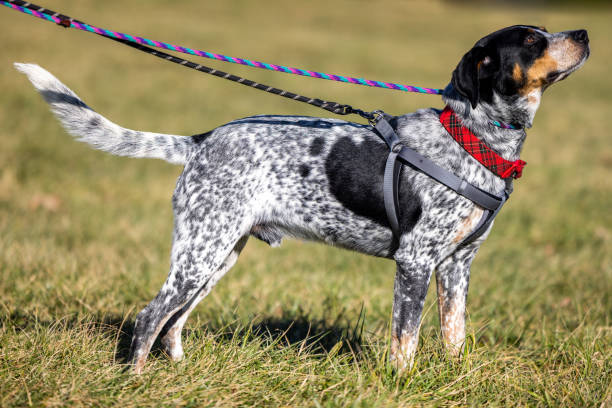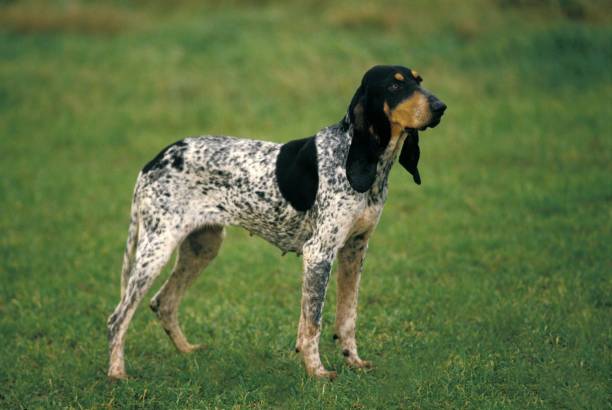Bluetick Coonhound

Breed History:
The Bluetick Coonhound is a uniquely American breed developed in the southern United States, especially Louisiana and Tennessee, during the 18th and 19th centuries. Bred for nighttime raccoon hunting, it descends from the French Grand Bleu de Gascogne, English Foxhounds, and various coonhound lines.
It was once classified under the English Coonhound umbrella but was officially recognised as a separate breed by the UKC in 1946 and the AKC in 2009. Revered for its tenacity on the trail, the Bluetick is both a working hound and a loyal family dog.
|
Gender |
Height |
Weight |
|
Male |
56-69 cm |
25-36 kg |
|
Female |
53-64 cm |
20-32 kg |
Size: Medium to Large
Life Expectancy: 11–12 years

Breed Appearance:
The Bluetick Coonhound is a muscular, athletic dog with a long, slightly arched back and strong legs built for endurance. It has a broad head, long drooping ears, and expressive, dark brown eyes.
Its short, glossy coat features a mottled (ticked) pattern in black and white that creates a characteristic “blue” appearance, often with tan markings on the legs, chest, and face. The tail is carried high and curved when alert.
Breed Type – Scent Hound:
A classic scent hound, the Bluetick is famed for its cold nose—the ability to track old, faint scents over long distances. It is determined, methodical, and vocal when on a trail.
At home, the Bluetick is gentle, loyal, and affectionate, though it remains alert and vocal, making it a natural watchdog. It is not aggressive but may be reserved with strangers.

Training:
Training requires patience and consistency. Blueticks are intelligent but independent thinkers, more interested in scents than commands.
Start early socialisation and basic obedience. Use positive reinforcement and avoid harsh correction. Recall can be unreliable off-leash due to strong tracking instincts, so leash control is important.
Health & Care:
Generally robust but may be susceptible to:
-
Hip dysplasia
-
Ear infections
-
Bloat (gastric torsion)
-
Eye issues like entropion
Regular vet checkups, proper ear cleaning, and feeding smaller, frequent meals can help maintain health and prevent common issues.

Living Conditions:
The Bluetick is best suited to rural or suburban homes with space to roam. It is not ideal for apartment living due to its size, energy, and vocal nature.
It thrives in homes where it can be active and spend time with its family. While usually good with children and other dogs, it may chase smaller pets due to prey drive.
Exercise:
This is a high-energy breed that needs at least 1–2 hours of exercise daily, including:
-
Long walks or jogs
-
Tracking games or nose work
-
Hiking or supervised free running
-
Hunting or field trials, if possible
Mental stimulation is equally important to avoid boredom-related issues.
Grooming:
Grooming is minimal:
-
Weekly brushing to reduce shedding
-
Regular ear cleaning to avoid infections
-
Occasional baths as needed
-
Routine dental care and nail trimming
The breed sheds moderately year-round and may have a slight hound odour.

Advantages:
-
Outstanding tracking and scenting abilities
-
Loyal and affectionate with family
-
Low grooming needs
-
Hardy, athletic, and built for endurance
-
Good-natured and social with proper training
-
Versatile for hunting, sport, or companionship
Disadvantages:
-
Very vocal—baying is loud and frequent
-
Needs a lot of exercise and mental stimulation
-
Prone to ear infections and joint issues
-
Strong prey drive—not ideal with small pets
-
Can be stubborn and scent-driven outdoors
-
Not suited for apartments or sedentary owners

